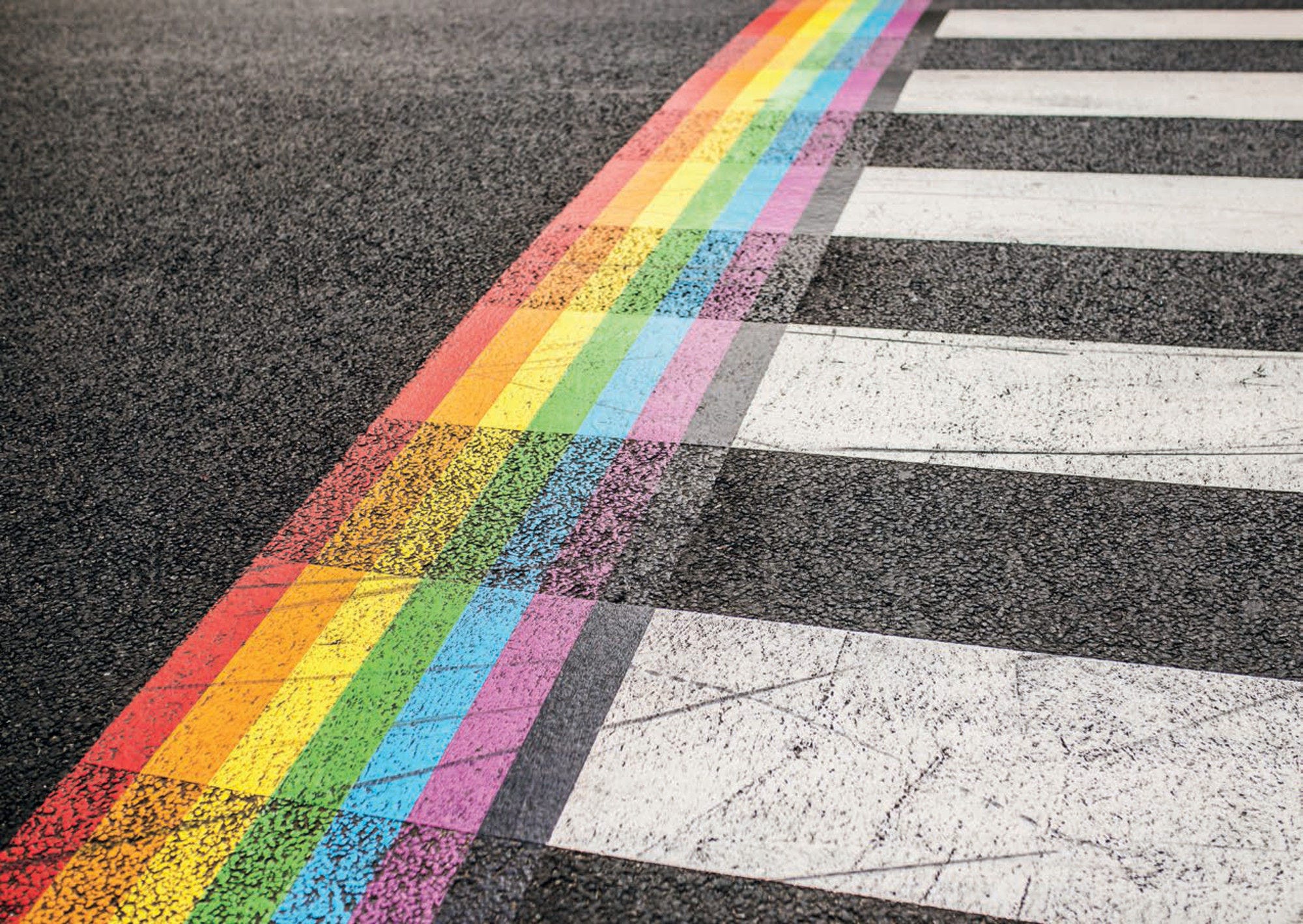Ensuring that LGBTI people – i.e. lesbians, gay men, bisexuals, transgender and intersex individuals – can live as who they are without being discriminated against or attacked is a concern worldwide. Discrimination against LGBTI people remains pervasive, while its cost is massive. It lowers investment in human capital due to bullying at school. It also reduces economic output by excluding LGBTI talents from the labour market and impairing their mental health, hence their productivity. This report provides a comprehensive overview of the extent to which laws in OECD countries ensure equal treatment of LGBTI people, and of the complementary policies that could help foster LGBTI inclusion. The report first identifies the legislative and regulatory frameworks in the areas of civil rights, protection against discrimination and violence, as well as health that are critical for the inclusion of sexual and gender minorities. The report then explores whether these laws are in force in OECD countries and examines the margin for further improvement. Finally, the report investigates the broader policy measures that should accompany LGBTI-inclusive laws in order to strengthen the inclusion of LGBTI people.
Over the Rainbow? The Road to LGBTI Inclusion

Abstract
Executive Summary
Ensuring that LGBTI people – i.e. lesbians, gay men, bisexuals, transgender and intersex individuals – can live as who they are without being discriminated against or attacked should concern us all, for at least three reasons. The first and most important reason is obviously ethical. Sexual orientation, gender identity and sex characteristics are integral aspects of our selves. Guaranteeing that LGBTI people are not condemned to forced concealment or to retaliation when their identity is revealed is crucial for them to live their lives as themselves, without pretence. The second reason is economic. Discrimination against LGBTI people hinders economic development through a wide range of channels. For instance, it causes lower investment in human capital due to LGBTI-phobic bullying at school as well as poorer returns on educational investment in the labour market. Anti-LGBTI discrimination also reduces economic output by excluding LGBTI talents from the labour market and impairing their mental and physical health, hence their productivity. The third reason why LGBTI inclusion should constitute a top policy priority is social. LGBTI inclusion is viewed as conducive to the emergence of less restrictive gender norms that improve gender equality broadly speaking.
This report provides a comprehensive overview of the extent to which laws in OECD countries ensure equal treatment of LGBTI people, and of the complementary policies that could help foster LGBTI inclusion. The report first identifies the legislative and regulatory frameworks that are critical for the inclusion of sexual and gender minorities. The report then explores whether these laws are in force in OECD countries and examines the margin for further improvement. Finally, the report presents the broader policy measures that should accompany LGBTI-inclusive laws in order to strengthen the inclusion of LGBTI people.
Which laws are LGBTI-inclusive?
The protection of individuals on the basis of sexual orientation, gender identity and sex characteristics does not imply the creation of new or special rights for LGBTI people but, simply, extending the same rights to LGBTI persons as those enjoyed by everyone else by virtue of international human rights standards. These standards are at the core of treaties, conventions or charters issued by the European Union, the United Nations, the Council of Europe or the Organization of American States that have been signed and ratified by OECD countries.
Applying these standards to LGBTI issues points to two categories of LGBTI-inclusive laws:
General provisions that are relevant for the inclusion of lesbian, gay, bisexual, transgender and intersex people altogether: (i) protection of LGBTI people against discrimination; (ii) protection of LGBTI people’s civil liberties; (iii) protection of LGBTI people against violence; (iv) protection of LGBTI people fleeing persecution abroad; and (v) existence of an LGBTI-inclusive equality body, ombudsman or human rights commission;
Group-specific provisions that aim to address the unique challenges faced by subgroups of the LGBTI population, and that can be further decomposed into:
LGB-specific provisions: (i) equal treatment of same-sex and different-sex consensual sexual acts; (ii) ban on conversion therapy; (iii) legal recognition of same-sex partnerships; (iv) equal adoption rights; and (v) equal access to assisted reproductive technology;
TI-specific provisions: (i) being transgender not categorised as a mental illness in national clinical classification; (ii) legal gender recognition; (iii) no medical requirement attached to legal gender recognition; (iv) availability of a non-binary gender option on birth certificates and other identity documents; and (v) postponing medically unnecessary sex-normalising treatment or surgery on intersex minors.
Are laws in OECD countries LGBTI-inclusive?
The road to LGBTI inclusion is not over the rainbow: although trends and levels remain unequal, all OECD countries have been making progress over the last two decades. On average, legal LGBTI-inclusivity, i.e. the share of laws that are in force in OECD countries among the set of LGBTI-inclusive provisions described above, was equal to 53% in 2019. OECD countries can be grouped in three performance tiers:
A bottom-performing tier characterised by below-average performance regarding both level of legal LGBTI-inclusivity as of 2019 and progress in legal LGBTI-inclusivity since 1999 (14 countries) ;
A middle-performing tier characterised by trends that suggest position relative to the OECD average may change in the near future, for better (1 country) or worse (3 countries) ;
A top-performing tier characterised by above-average performance regarding both level of legal LGBTI-inclusivity as of 2019 and progress in legal LGBTI-inclusivity since 1999 (17 countries)
Legal LGBTI-inclusivity is positively associated with:
Social acceptance of LGBTI people: while countries with greater social acceptance of sexual and gender minorities are more likely to pass LGBTI-inclusive laws, legal changes in favour of LGBTI people in turn improve attitudes towards this population;
Gender equality – should it be measured by support for gender equality, the share of women in parliament, female labour force participation or gender wage gap;
Economic development: an increase in legal LGBTI inclusivity from its average value among the three lowest-performing countries to its average value among the three highest-performing countries is related to an increase in real GDP per capita of approximately USD 3 200.
Even top-performing countries need to continue demonstrating leadership: many of the provisions critical for the inclusion of transgender and intersex people are in force in only a minority of these countries.
What else can be done beyond passing LGBTI-inclusive laws?
Analysis of nationwide action plans currently in force in one third of OECD countries highlights several complementary measures to strengthen LGBTI inclusion:
Enforcement mechanisms to make LGBTI-inclusive antidiscrimination, hate crime/hate speech and asylum laws truly effective, e.g. training police officers on properly dealing with hate crimes targeting LGBTI people;
Policies aimed at fostering a culture of equal treatment in education, employment and health care, beyond enforcing laws prohibiting discrimination in these fields ;
Actions to create and maintain popular support for LGBTI inclusion, e.g. well-designed awareness-raising activities among the general public.
In addition, LGBTI-inclusive laws should come along significant efforts to make LGBTI individuals better represented and visible in national statistics. Without data on sexual orientation, gender identity and sex characteristics, policy makers aiming to improve LGBTI inclusion will continue to do so with little if any relevant information.



